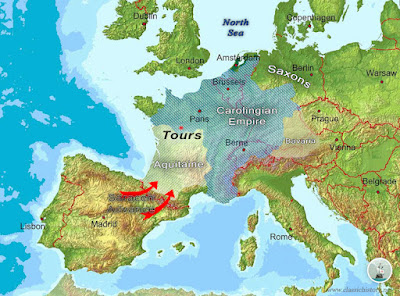Reportedly, Mizizios did not want the position, but he stayed at the head of this rebellion for seven months until Constantine led an expedition to Sicily to suppress the rebels, killing Mizizios and the man who killed Constans. On the other hand, the Liber Pontificalis ("Book of Popes") recorded that it was the Exarchate of Africa (a Byzantine administrative district) that suppressed the revolt and sent Mizizios' head to Constantinople. (Years later, Mizizios' son John also rebelled in Sicily, and we are told Constantine went to Sicily to stop him; this revolt lasted seven months. It is possible that early historical records have conflated these two rebellions.)
With this slightly rocky start, the 18-year-old emperor went on to reign for 17 years. As well as rebellion to the west, he had to focus on danger from the east. There was a desire by an Umayyad Caliph, Muawiyah I, to overthrow the emperor in Constantinople. Carthage and Sicily were attacked in 667. Fleets captured or attacked other coastal cities for the next two years, and by the start of 668, Constantinople was besieged by both a land army and a fleet.
The countryside was ravaged, but the city itself was merely blockaded, not attacked. It became a waiting game. By June of 668, the Arab armies encamped around Constantinople were running out of food and malnourished. Famine followed, and an outbreak of smallpox caused the leaders to lift the siege and retreat to the town Cyzicus across the water. They continued to raid outlying Byzantine territory until they returned to Syria in 669/70.
Although he had done nothing to oppose the invaders except keep the city together, Constantine's popularity rose after the unsuccessful siege. He had other problems, however, including an economic crisis, which we'll talk about tomorrow.












